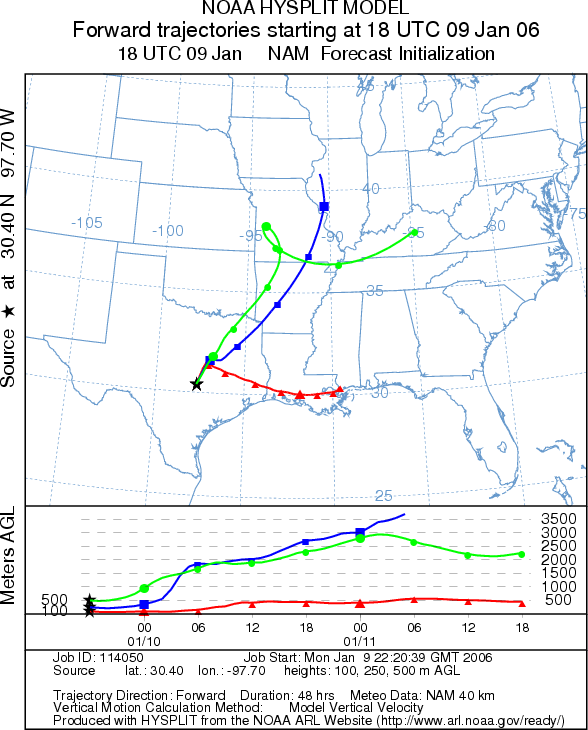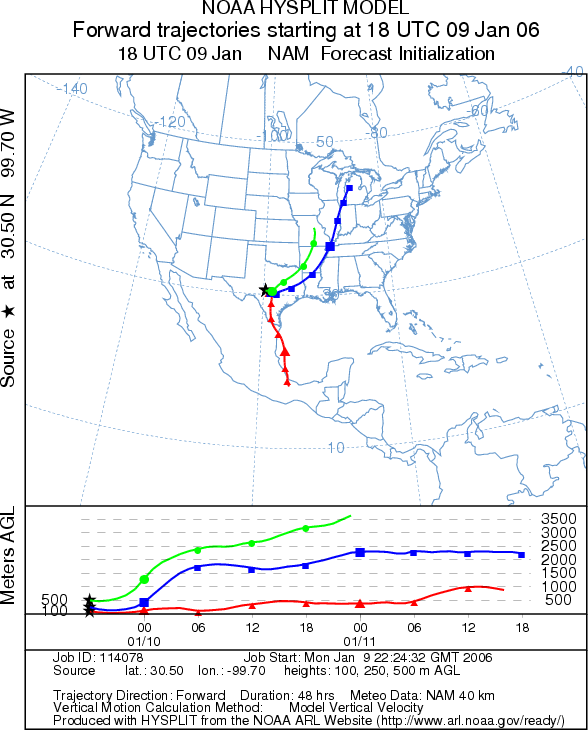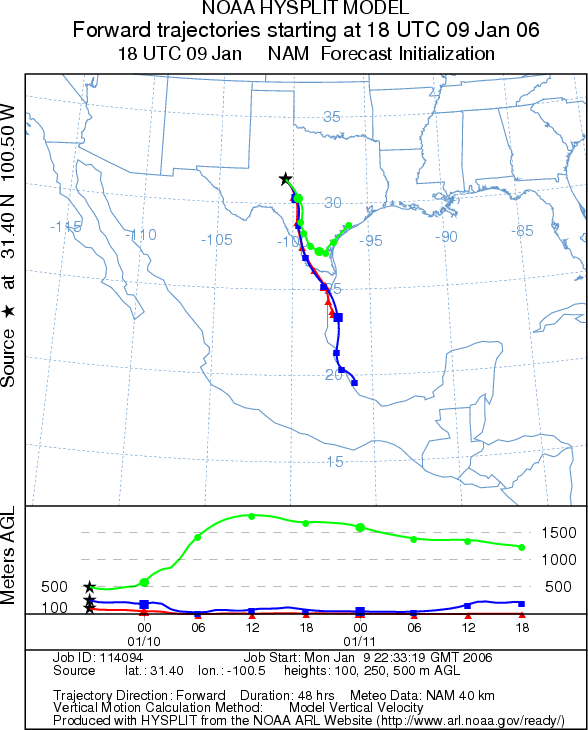The University of Tulsa
Mountain Cedar Pollen Forecast
Metropolitan Area |
Exposure Risk |
|
Dallas/Fort Worth |
Moderate |
|
Austin |
High to Very high |
|
San Antonio |
High to Very High |
Date Issued: 9 January 2006
Mountain Cedar Location(s): Edwards Plateau, Texas
Regional Weather: Mon
and Tues, Jan 9 and 10. TX/OK:
Strong frontal system moves into the region this morning bringing strong northerly winds to the entire region.
Monday will see cooler temperatures and cloudy skies in Oklahoma with strong gusty north to northeast winds and
a chance of light rain or light snow in parts of the area. Daytime highs in Oklahoma will be in the mid 40s to
low 50s and nighttime lows in the 30s. Tuesday will bring clearing skies with moderate NW winds and high temperatures
in the 40s. In Texas skies will be clear to partly cloudy with daytime highs in the upper 70s to low 80s on Monday.
Nighttime lows will be in the upper 30s to low 40s. Winds will be from the south or southwest and shifting to the
northwest as the frontal systems moves in late on Monday. On Tuesday winds will be from the NW with temperatures
in the low to mid 60s. Southerly winds will return on Wednesday throughout the Oklahoma/Texas region.
Trajectory weather: The air mass trajectories today are
showing the influence of the frontal system moving into the region. Trajectories from the eastern side of the Edwards
Plateau Texas move to the northeast and east today and show good characteristics for transport. The trajectories
from the western side of the plateau are associated with colder sinking air at ground level and move to the south
and show poor characteristics for entrainment and travel. Trajectories for Tuesday begin moving to the southeast
and then turn back to the northeast late on Tuesday. Characteristics are not optimal for entrainment and travel.
OUTLOOK: *** Moderate to Very high threat
*** Conditions are good for pollen release. However there
are mixed conditions for dispersal. Some trajectories show good characteristics for transport, but others show
characteristics that are not conducive to transport. As a result the greatest exposure risk would be for individuals
living close to mountain cedar populations.
Trajectory Start (s) (shown by *
on map): Austin, TX; Junction, TX; San Angelo, TX.
AUSTIN

JUNCTION

SAN ANGELO

Prepared by: Estelle
Levetin (Faculty of Biological
Science, The University
of Tulsa, 600 S. College, Tulsa, OK 74104). This forecast gives the anticipated future track of released
Mountain Cedar pollen, weather conditions over the region and along the forecast pathway, and an estimated time
of arrival for various metropolitan areas.
Questions: Aerobiology Lab e-mail: pollen@utulsa.edu
Return to Forecasting Home Page